#Lady Bird Johnson Grove
Explore tagged Tumblr posts
Video
Premium Outdoor Experiences at Redwood National Park by Mark Stevens Via Flickr: While walking along the Lady Bird Johnson Grove Trail with a view looking up and to the east at nearby coastal redwoods in Redwood National Park.
#Azimuth 74#Blue Skies#California and Oregon Road Trip#Coast Redwood#Day 7#DxO PhotoLab 5 Edited#Evergreen Trees#Evergreens#Forest#Forest Landscape#Lady Bird Johnson Grove#Lady Bird Johnson Grove Trail#Landscape#Landscape - Scenery#Looking East#Looking Up#Looking up at Sky#Looking up at Sky through Trees#Looking up at Sky thru Trees#Looking up to Sky#Nature#Nikon D850#No People#North Humboldt Coast Range#Northern California Coast Range#Northwest U.S. Coast Ranges#Outside#Pacific Ranges#Project365#Redwood National Park
3 notes
·
View notes
Text

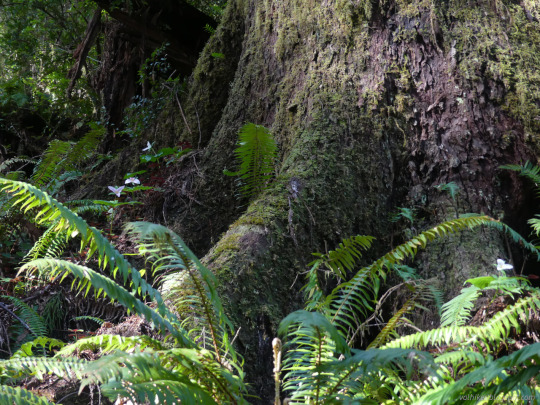


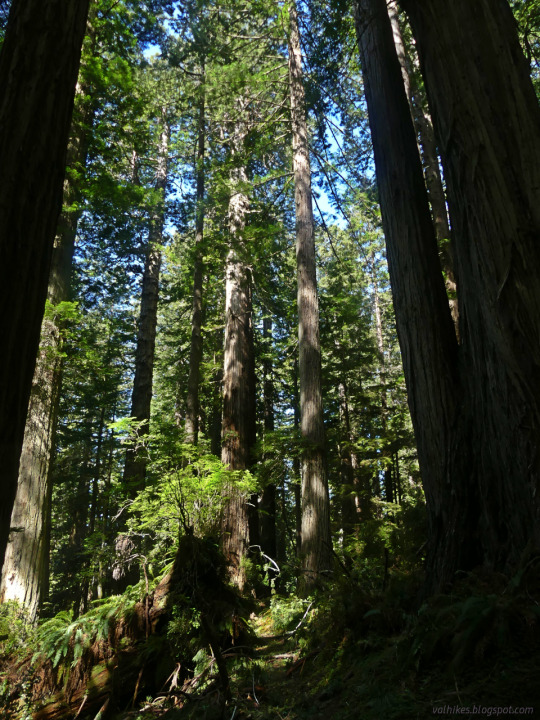



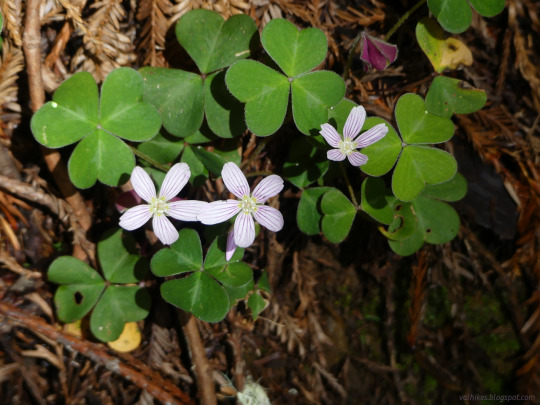

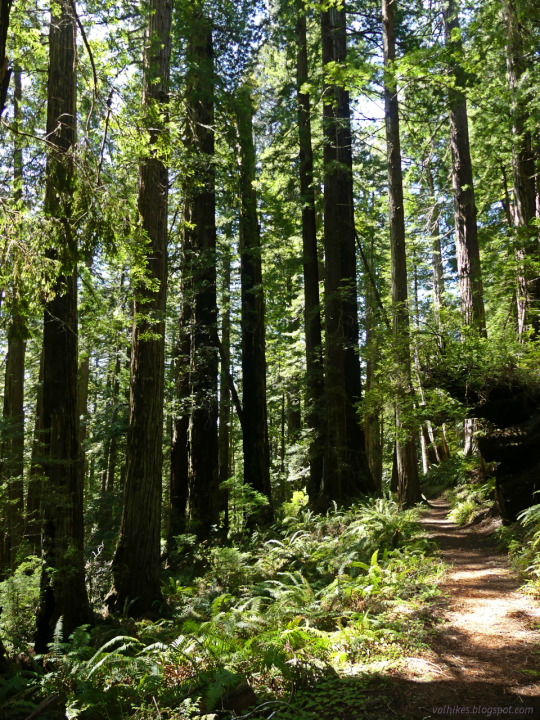
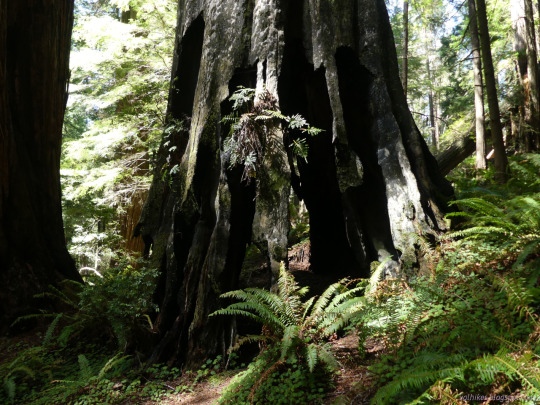
Redwood National Park, California
Last #ThickTrunkTuesday, I got out into the old growth forests in Redwood National Park. Hiking Berry Glen, I can stop by a waterfall at one end and famous redwood grove at the other with exceptional trees all along the way.
#thick trunk Tuesday#hiking#nature#landscape#travel#hike#outside#day hike#California#redwoods#Redwood National Park#Trillium Falls#Lady Bird Johnson Grove#Humboldt County#Berry Glen#old growth forest#forest#big trees
5 notes
·
View notes
Text



Lady Bird Johnson Grove, Redwoods National Park, CA (October 2021) - me
1 note
·
View note
Text

Lady Bird Johnson Grove at Redwoods National Park.
Northern California
Oct. 2020
#redwoods#redwoods national park#forest#forest photography#national park service#national park#nature#nature photography#landscape#landscapephotography#travel#original photography#photographers on tumblr#photography#lensblr#wanderingjana
21 notes
·
View notes
Text
Redwood National and State Parks: Discovering the World’s Tallest Trees
Redwood National and State Parks, located on the rugged northern coast of California, are home to the world’s tallest trees—the majestic coast redwoods. These ancient giants, some of which soar over 350 feet into the sky, are a natural wonder that has captivated visitors for generations. Walking among these towering trees is a humbling and awe-inspiring experience, offering a glimpse into a world where nature reigns supreme. Join us as we explore the incredible beauty and significance of these iconic forests.
The Majesty of the World’s Tallest Trees

The coast redwoods, or Sequoia sempervirens, are the tallest trees on Earth, with the tallest known specimen, Hyperion, standing at a staggering 379.7 feet. These trees are not only remarkable for their height but also for their longevity, with some individuals living for more than 2,000 years. As you stand at the base of these colossal trees, craning your neck to take in their full height, you can’t help but feel a profound sense of awe. The redwoods’ immense size and age make them a symbol of endurance and resilience, having survived through millennia of natural and human-induced changes.
A Network of Protected Forests

Redwood National and State Parks is a unique partnership between federal and state agencies, encompassing over 139,000 acres of protected land. This includes Redwood National Park, along with three state parks: Jedediah Smith Redwoods, Del Norte Coast Redwoods, and Prairie Creek Redwoods. Together, these parks protect nearly half of the world’s remaining old-growth redwoods. Each park offers its own unique landscapes and experiences, from the dense, shadowy groves of Jedediah Smith to the coastal cliffs and meadows of Del Norte. No matter where you go, you’ll be surrounded by the awe-inspiring presence of these ancient trees.
Exploring the Redwood Groves
One of the best ways to experience the redwoods is by exploring the many trails that wind through the parks. The trails range from easy walks to more challenging hikes, each offering a different perspective on the forest. The Tall Trees Grove in Redwood National Park is a must-visit, home to some of the tallest trees in the park. The trail to the grove is a moderate hike, leading you deep into the heart of the redwood forest. For a shorter, yet equally impressive experience, the Lady Bird Johnson Grove offers a loop trail that takes you through a cathedral-like grove of towering trees.
The Rich Biodiversity of the Parks

While the redwoods are the star attraction, the parks are also home to a rich array of plant and animal life. The forest floor is lush with ferns, mosses, and wildflowers, creating a vibrant green carpet beneath the towering trees. The parks’ rivers and streams provide habitat for salmon and steelhead trout, while the meadows and coastal areas are home to Roosevelt elk, black bears, and a variety of bird species. The diverse ecosystems within the parks support a complex web of life, making it a hotspot for biodiversity and a living laboratory for scientists and nature enthusiasts alike.
The Coastal Connection
Redwood National and State Parks are not just about the forests; they also encompass some of the most stunning coastal scenery in California. The parks’ rugged coastline features dramatic cliffs, secluded beaches, and rocky tide pools teeming with marine life. The Coastal Trail offers spectacular views of the Pacific Ocean, where you might spot migrating gray whales, playful sea otters, or soaring seabirds. The combination of towering redwoods and wild, windswept shores makes this a truly unique and breathtaking landscape.
The Importance of Preservation
The history of the redwoods is one of survival against the odds. In the late 19th and early 20th centuries, much of the redwood forest was logged, leading to the destruction of vast areas of old-growth trees. However, thanks to the efforts of conservationists and organizations like the Save the Redwoods League, significant portions of these ancient forests were protected. Today, ongoing conservation efforts continue to preserve these giants for future generations. Visitors to the parks are encouraged to follow Leave No Trace principles and support local conservation initiatives to help protect this irreplaceable natural treasure.
Conclusion
Redwood National and State Parks offer a rare opportunity to experience the world’s tallest trees in their natural habitat. The towering redwoods, with their incredible height, age, and beauty, are a reminder of the power and majesty of nature. As you explore these ancient forests, you’ll gain a deeper appreciation for the importance of preserving such extraordinary landscapes. Whether you’re hiking through a serene grove, marveling at the coastal views, or simply standing in awe beneath a giant tree, Redwood National and State Parks provide an unforgettable journey through some of the world’s most remarkable natural wonders.
2 notes
·
View notes
Text

Among the redwoods. Lady Bird Johnson Grove, Redwood National Park, California.
7 notes
·
View notes
Text

Lady Bird Johnson Grove Trail, Orrick, CA
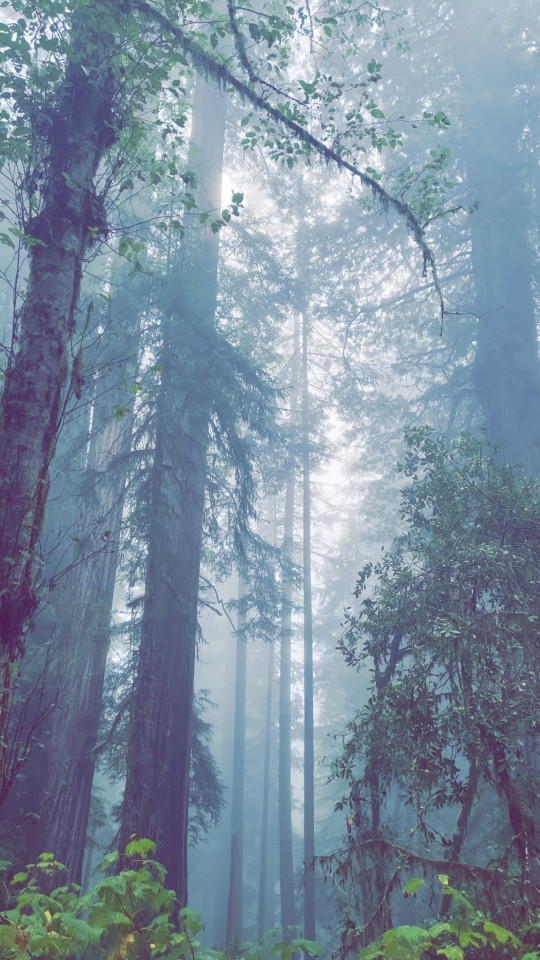
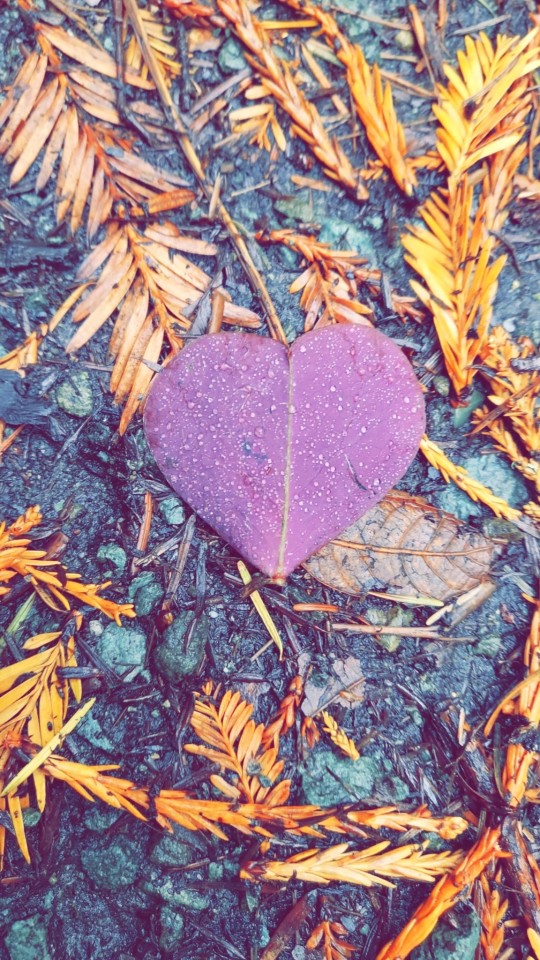
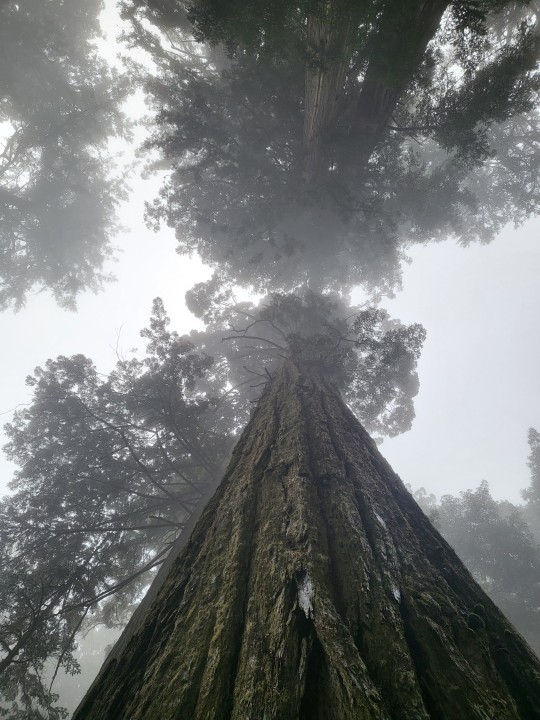

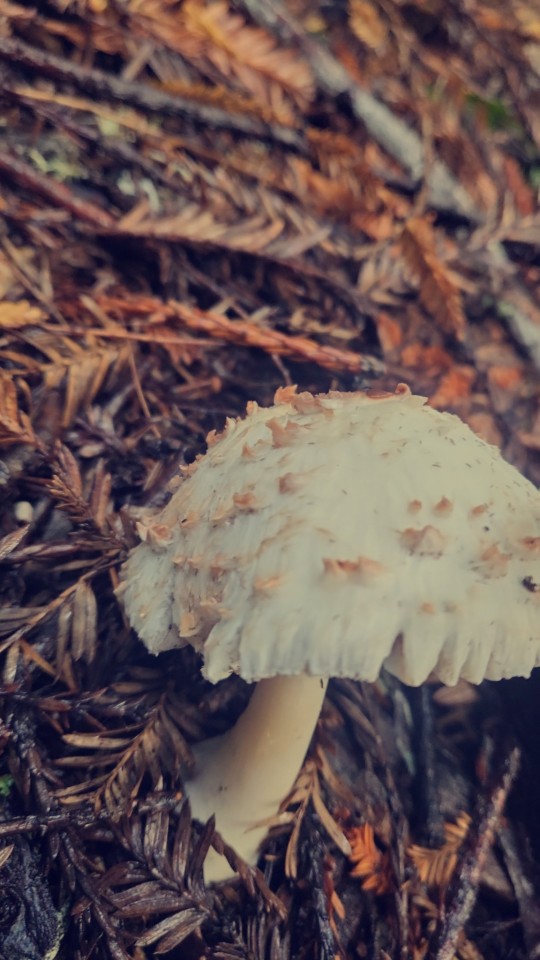
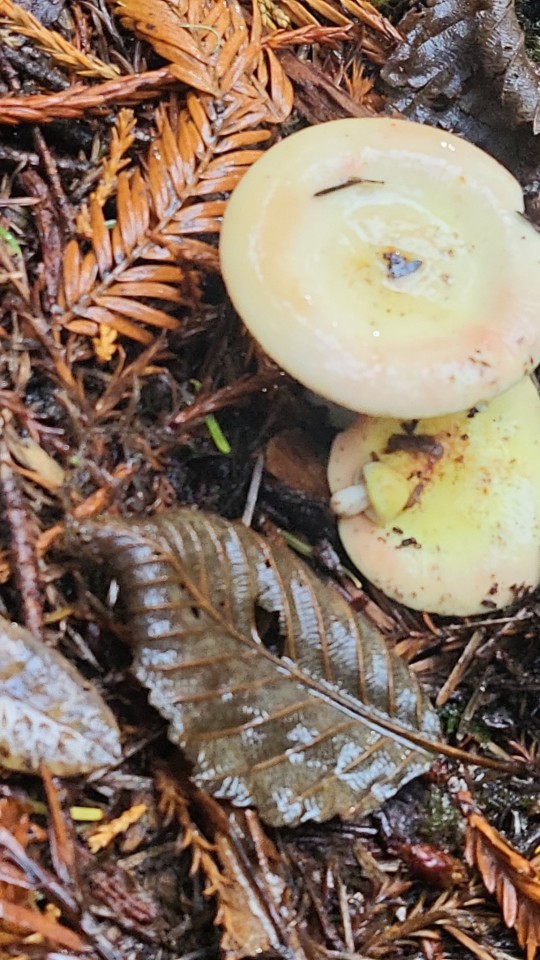
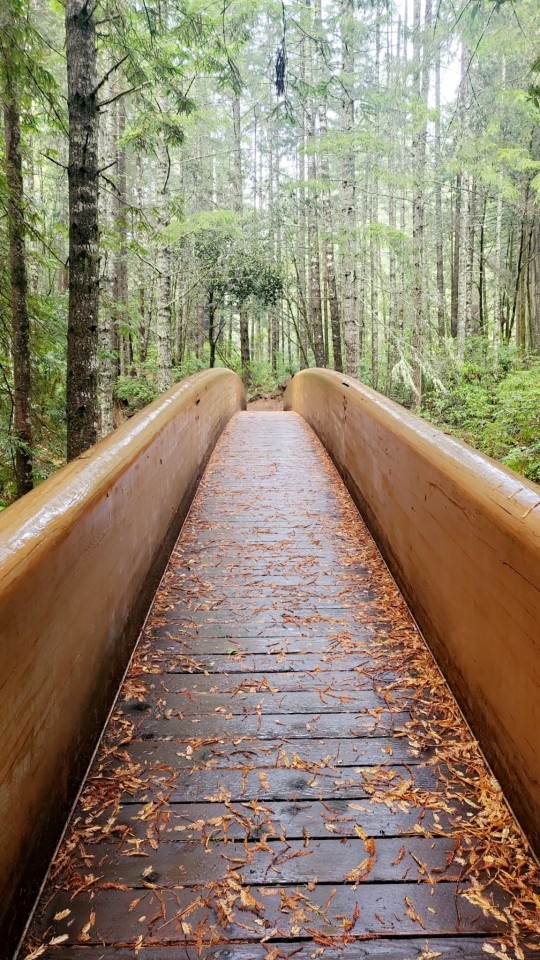
#pnw photography#pnw#pnwwonderland#fall vibes#humboldt county#california#northern california#woods#fog#twilight#forestcore#woodlandcore#redwoodcore
2 notes
·
View notes
Text
0 notes
Text
USA 12.9.23: Redwood National State Park
Worum's geht: Wanderung, etwas Geschichte zu den Redwoods, Werbung für Rosinen, eine rüstige Volunteer
Nur 25 Minuten vom Campingplatz Abalone entfernt liegt der Zugang zu einem der Redwood State Parks, der auch zufällig unter den Google-Rezensionen empfohlen wurde. Ich habe mir eine kleine Challenge gegeben und eine Hin-und-Zurück-Wanderung mit steilem Gefälle ausgesucht. Genauer gesagt habe ich das mit dem Gefälle übersehen und natürlich falsch angefangen, nämlich auf dem Berg geparkt und mir den beschwerlichen Teil der Wanderung für den Rückweg aufgehoben. Gut, dass ich den ultimativen Energiespender dabei hatte, nämlich kalifornische Sultaninen (ergo ein Stück Kindheit, weshalb die Verpackung ein eigenes Poserfoto verdient).
Ich rechnete mit ungefähr 3,5h Stunden Trail+Pause, am Ende war es doch weniger, da ich nicht den ganzen Weg zum Highway hinuntergelaufen bin. Der dröhnte schon von weitem den Berg rauf, weshalb ich vorher schon umkehrte.
Start war am Lady Bird Johnson Grove Rundweg, benannt nach der Dame, die sich für den Erhalt der Redwood-Bäume stark gemacht hat. Im Video sieht man nicht nur mit meinem üblichen Gewackel die wunderbare Natur, sondern kriegt auch einen Kurzabriss zur Chronologie eines Artenschutzes.

Nach ca 25 Minuten bog ich auf den steilen und wenig belaufenen In & Out-Trail namens Berry Glen ab und von hier an, gestehe ich, wird die 3D-Erinnerung brüchig, denn ich hing nur vor dem Handybildschirm, so groß war die Begeisterung all das mit meiner tollen - gefühlt - 1,2 Pixel-Handykamera einzufangen. Der Lady Bird-Abschnitt gehört wohl noch zum second-growth-Wald, d.h. hier wurde einmal alles gerodet und es gibt quasi keinen natürlich gewachsenen Wald bis auf wenige Beispiele. Siehe abfotografierte Texttafel oben. Der Berry Glen-Abschnitt (den ich wie gesagt leider verkehrt herum betreten habe - man sollte ihn am besten von Elk Meadow im Tal starten, dort den Highway überqueren und dann den bewaldeten Hang hinaufklettern - oben gibt es zahlreiche ruhig gelegene Rastmöglichkeiten) ist hingegen Urwald, die Bäume wesentlich älter und der Platz zwischen ihnen aufgeräumt mit vorwiegend Farn und wenig anderen Baumarten bewachsen. Trotz Handydemenz weiß ich zumindest noch, dass ich in einem Baum stand und einen misslungenen 360-Grad-Sprungkick hätte machen können - es wäre locker Platz dafür gewesen. Ich sah einen umgestürzten Stamm quer über dem Wanderpfad, auf dem eine Tanne/Douglasie (?) wuchs und deren Wurzeln wie dicke Schlangen an diesem Stamm entlangwuchsen. Ich sah auch eine Bananenschnecke - und nein, das Foto ist nicht farblich nachbearbeitet. Eine ältere Dame, die mir begegnete, erzählte begeistert, dass sie nach "ripe bananas" sucht, also Bananenschnecken mit braunen Punkten, denn die seien selten geworden. Wir geraten ins Palavern, denn ich merke, dass sie viel über die Gegend weiß und sie antwortet mir bereitwillig und ausschweifend alle Fragen. Sie erzählt, dass die Redwoods deshalb so gut an der pazifischen Küste wachsen, da sie den trockenen Boden mögen aber auf den feuchten Nebel, der morgens bis in die Mittagsstunde die Hänge hinaufzieht, angewiesen sind. Die Redwood-Borke ist schwer brennbar, denn ihr Harz besteht im Gegensatz zu Fichten und Tannen aus überwiegend Wasser. "Combustion", sagt sie Dame lachend, "takes a long time". Während also in Waldbränden die meiste Flora den Flammen zum Opfer fällt, haben die roten Riesen eine gute Überlebenschance. Man sieht viele Redwoods mit Brandspuren: Sie sind von innen komplett ausgehöhlt, aber die lebensnotwendige Borke ist erhalten - der Baum lebt weiter. Die Frau möchte noch wissen, wo ich herkomme und rührt, in der Annahme ich sei wohl noch Studentin, die Werbetrommel für national park volunteering (Freiwilligenarbeit im Nationalpark). Aber sagt dann auch, dass sie bis ins Rentenalter in Kalifornien und Arizona als Volunteer tätig gewesen sei. Sie spricht mit einem Feuer in ihren Augen, den ich bei vielen Amerikanern, denen ich über den Weg gelaufen bin, bislang vermisse.
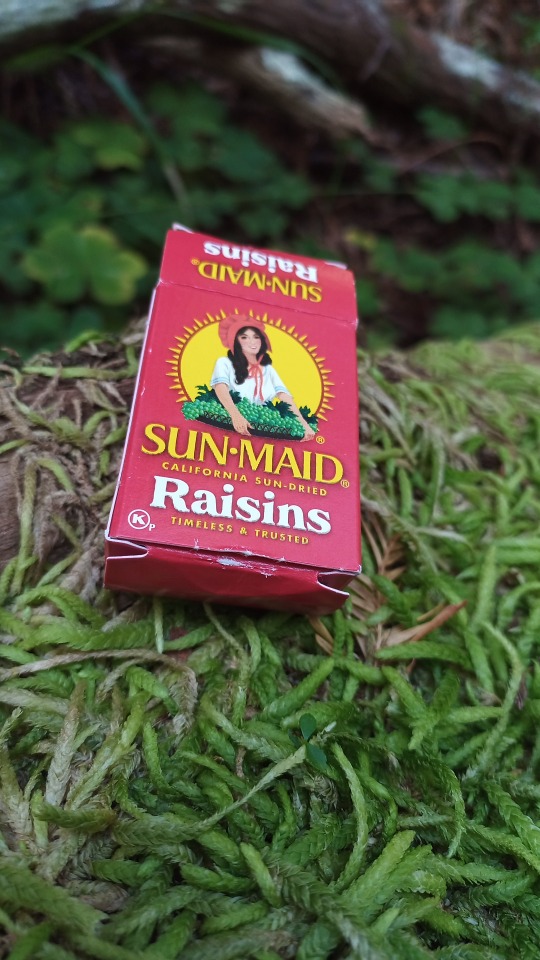


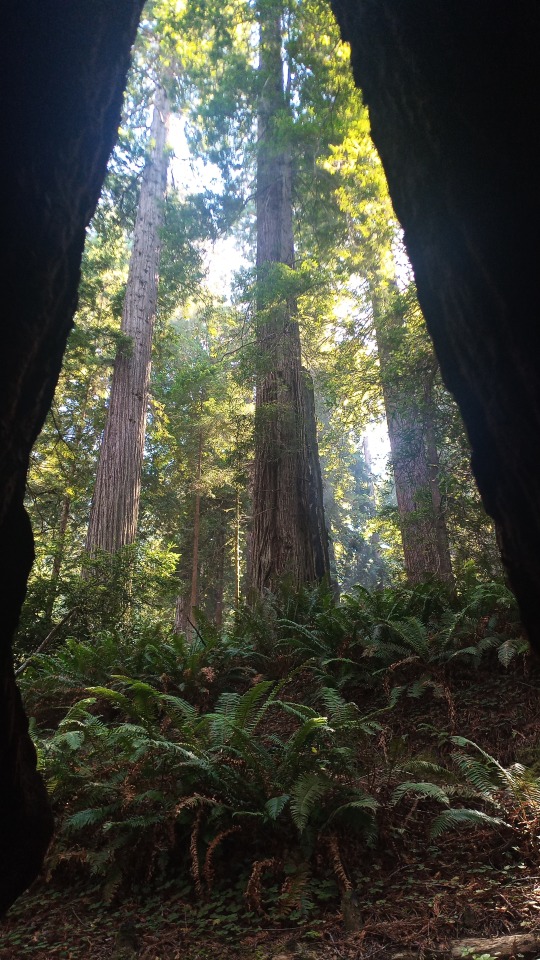
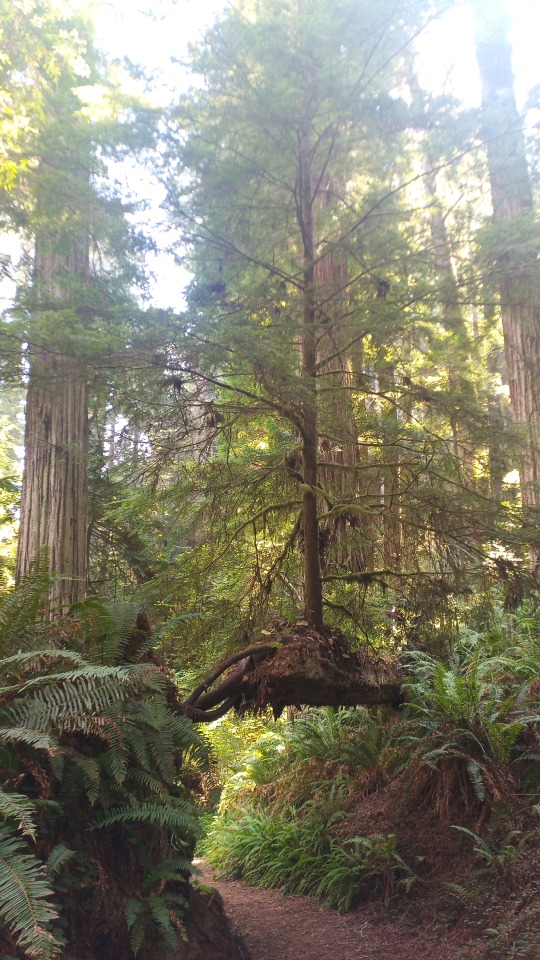
1 note
·
View note
Text
A Look At How Cherry Blossom Trees Became A Symbol Of Spring—And Friendship—In The Capital
WASHINGTON, DC - MARCH 27: Cherry blossoms bloom on the grounds of the U.S. Capitol on March 27, ... [+] 2023 in Washington, DC. (Photo by Anna Moneymaker/Getty Images)
Getty Images
Few things herald the coming of spring in the United States like the blooming of the cherry blossom trees around the Tidal Basin in Washington, D.C.
Although the National Park Service has deemed March 23, 2023, as "peak bloom" for the blossoms, March 27 is a bit more significant: It was on this day in 1912 that Helen Taft, wife of President William Taft, and the Viscountess Chinda, wife of the Japanese ambassador, planted two Yoshino cherry trees on the northern bank of the Potomac River near the Jefferson Memorial. The event was meant to celebrate what we become an iconic gift from the Japanese government of 3,020 cherry trees to the U.S. government.
D.C. Cherry Blossom Tree History
This wasn't the first significant appearance of Japanese cherry trees in D.C. In January 1910, 2,000 trees arrived from Japan, but they were infested with insects and nematodes, and were diseased. As a result, they had to be destroyed.
The mayor of Tokyo, Yukio Ozaki, and others suggested a second donation, and those were shipped out in 1912. Of the 3,020 trees, more than half were Yoshino cherry trees. Two were planted along the Tidal Basin in a formal ceremony, while the rest were homed along the basin, in East Potomac Park, and on the White House grounds.
The trees proved to be very popular with visitors, who flocked to see the pink and white blossoms. In 1935, D.C. celebrated its first “Cherry Blossom Festival” which eventually became an annual event.
Miss America 1964, Donna Axum, waves from a convertible in the National Cherry Blossom Festival ... [+] 'Parade of Princesses,' Washington DC, April 11, 1965. (Photo by PhotoQuest/Getty Images)
Getty Images
MORE FROMFORBES ADVISOR
After World War II, the famed cherry tree grove along the Arakawa River near Tokyo—the parent stock for Washington D.C.'s first trees—had fallen into disrepair. The National Park Service shipped budwood from descendants of those same trees back to Tokyo to help restore the original grove.
More than a decade later, in 1965, Japan would return the favor by gifting 3,800 Yoshino trees. First Lady Lady Bird Johnson, wife of President Lyndon Baines Johnson, and Ryuji Takeuchi, wife of Japan's Ambassador, reenacted the famous planting ceremony of 1912. Many of these trees were planted on the grounds of the Washington Monument.
Today, the cherry blossom trees are a symbol of continued friendship between the two countries.
Caring For The Trees
To ensure the health of the trees, the National Mall and Memorial Parks (NAMA) Division of the National Park Service employees a small team. They work to care not only for the nearly 4,000 cherry blossom trees, but also the more than 20,000+ trees on the 1,100 acres making up National Mall and Memorial Parks.
National Park Service
The National Park Service was created by the Organic Act of 1916 “to conserve the scenery and the natural and historic objects and the wildlife therein and to provide for the enjoyment of the same in such manner and by such means as will leave them unimpaired for the enjoyment of future generations.”
The NPS covers over 85 million acres, including 136 historical parks or sites, 84 national monuments, 63 national parks, 31 national memorials, 25 battlefields or military parks, and 84 otherwise designated national park units. In 2021, 297 million visitors stopped by an NPS site. Before Covid, park visitation routinely exceeded 300 million.
Funding
The NPS is primarily funded by Congress—in 2023, the budget request was for $3 .1 billion for operations of the national park system. The agency also receives funding through park entrance, user fees, and private philanthropy.
WASHINGTON, DC - APRIL 28: Actress Bellamy Young speaks at the Trust for the National Mall's Ninth ... [+] Annual Benefit Luncheon in West Potomac Park on April 28, 2016 in Washington, DC. (Photo by Paul Morigi/Getty Images)
Getty Images
One of those philanthropic sources is the Trust for the National Mall, the non-profit partner of the National Park Service on the National Mall. According to Julie Moore, Vice President of Communications for Trust for the National Mall, their mission is to help restore, preserve, and enrich the National Mall. Preserving and protecting the 3,700 cherry trees on the National Mall is an essential part of that work and mission.
The Trust is currently raising money through its Adopt-A-Cherry Tree program. The program is the primary source of private funding for the care and maintenance of the cherry trees. According to Moore, it costs approximately $1,000 to endow a tree throughout its lifetime, including acquiring and planting a young sapling, pruning, feeding, and watering.
Today, the famed cherry blossom trees are facing challenges, including a changing climate and advanced age—remember, they're more than 100 years old. And with more than 1.5 million visitors breezing by the trees each year, celebrating the springtime blooms has become a tradition in the nation's capital.
(Can't make it to D.C.? You can keep tabs on the trees via the Bloomcam. Full disclosure: It's addictive.)
WASHINGTON D.C., UNITED STATES - MARCH 26: Cherry blossoms are in bloom around the Tidal Basin ... [+] during 'National Cherry Blossom Festival ' at National Mall on March 26, 2023 in Washington, DC, United States. (Photo by Rabia Iclal Turan/Anadolu Agency via Getty Images)
Anadolu Agency via Getty Images
The Trust has set a goal of raising $3.7 million to protect the cherry trees on the National Mall. So far, they've raised nearly $500,000 to plant new saplings and care for the trees. The aim, says Moore, is to make sure the iconic cherry trees bloom for generations to come.
Read more here https://fx7.s3-web.au-syd.cloud-object-storage.appdomain.cloud/us-taxation/US-Tax/International-Taxation-for-US-Expats-How-to-Deal-With-Capital-Gains-Tax.html
0 notes
Text
A Look At How Cherry Blossom Trees Became A Symbol Of Spring—And Friendship—In The Capital
WASHINGTON, DC - MARCH 27: Cherry blossoms bloom on the grounds of the U.S. Capitol on March 27, ... [+] 2023 in Washington, DC. (Photo by Anna Moneymaker/Getty Images)
Getty Images
Few things herald the coming of spring in the United States like the blooming of the cherry blossom trees around the Tidal Basin in Washington, D.C.
Although the National Park Service has deemed March 23, 2023, as "peak bloom" for the blossoms, March 27 is a bit more significant: It was on this day in 1912 that Helen Taft, wife of President William Taft, and the Viscountess Chinda, wife of the Japanese ambassador, planted two Yoshino cherry trees on the northern bank of the Potomac River near the Jefferson Memorial. The event was meant to celebrate what we become an iconic gift from the Japanese government of 3,020 cherry trees to the U.S. government.
D.C. Cherry Blossom Tree History
This wasn't the first significant appearance of Japanese cherry trees in D.C. In January 1910, 2,000 trees arrived from Japan, but they were infested with insects and nematodes, and were diseased. As a result, they had to be destroyed.
The mayor of Tokyo, Yukio Ozaki, and others suggested a second donation, and those were shipped out in 1912. Of the 3,020 trees, more than half were Yoshino cherry trees. Two were planted along the Tidal Basin in a formal ceremony, while the rest were homed along the basin, in East Potomac Park, and on the White House grounds.
The trees proved to be very popular with visitors, who flocked to see the pink and white blossoms. In 1935, D.C. celebrated its first “Cherry Blossom Festival” which eventually became an annual event.
Miss America 1964, Donna Axum, waves from a convertible in the National Cherry Blossom Festival ... [+] 'Parade of Princesses,' Washington DC, April 11, 1965. (Photo by PhotoQuest/Getty Images)
Getty Images
MORE FROMFORBES ADVISOR
After World War II, the famed cherry tree grove along the Arakawa River near Tokyo—the parent stock for Washington D.C.'s first trees—had fallen into disrepair. The National Park Service shipped budwood from descendants of those same trees back to Tokyo to help restore the original grove.
More than a decade later, in 1965, Japan would return the favor by gifting 3,800 Yoshino trees. First Lady Lady Bird Johnson, wife of President Lyndon Baines Johnson, and Ryuji Takeuchi, wife of Japan's Ambassador, reenacted the famous planting ceremony of 1912. Many of these trees were planted on the grounds of the Washington Monument.
Today, the cherry blossom trees are a symbol of continued friendship between the two countries.
Caring For The Trees
To ensure the health of the trees, the National Mall and Memorial Parks (NAMA) Division of the National Park Service employees a small team. They work to care not only for the nearly 4,000 cherry blossom trees, but also the more than 20,000+ trees on the 1,100 acres making up National Mall and Memorial Parks.
National Park Service
The National Park Service was created by the Organic Act of 1916 “to conserve the scenery and the natural and historic objects and the wildlife therein and to provide for the enjoyment of the same in such manner and by such means as will leave them unimpaired for the enjoyment of future generations.”
The NPS covers over 85 million acres, including 136 historical parks or sites, 84 national monuments, 63 national parks, 31 national memorials, 25 battlefields or military parks, and 84 otherwise designated national park units. In 2021, 297 million visitors stopped by an NPS site. Before Covid, park visitation routinely exceeded 300 million.
Funding
The NPS is primarily funded by Congress—in 2023, the budget request was for $3 .1 billion for operations of the national park system. The agency also receives funding through park entrance, user fees, and private philanthropy.
WASHINGTON, DC - APRIL 28: Actress Bellamy Young speaks at the Trust for the National Mall's Ninth ... [+] Annual Benefit Luncheon in West Potomac Park on April 28, 2016 in Washington, DC. (Photo by Paul Morigi/Getty Images)
Getty Images
One of those philanthropic sources is the Trust for the National Mall, the non-profit partner of the National Park Service on the National Mall. According to Julie Moore, Vice President of Communications for Trust for the National Mall, their mission is to help restore, preserve, and enrich the National Mall. Preserving and protecting the 3,700 cherry trees on the National Mall is an essential part of that work and mission.
The Trust is currently raising money through its Adopt-A-Cherry Tree program. The program is the primary source of private funding for the care and maintenance of the cherry trees. According to Moore, it costs approximately $1,000 to endow a tree throughout its lifetime, including acquiring and planting a young sapling, pruning, feeding, and watering.
Today, the famed cherry blossom trees are facing challenges, including a changing climate and advanced age—remember, they're more than 100 years old. And with more than 1.5 million visitors breezing by the trees each year, celebrating the springtime blooms has become a tradition in the nation's capital.
(Can't make it to D.C.? You can keep tabs on the trees via the Bloomcam. Full disclosure: It's addictive.)
WASHINGTON D.C., UNITED STATES - MARCH 26: Cherry blossoms are in bloom around the Tidal Basin ... [+] during 'National Cherry Blossom Festival ' at National Mall on March 26, 2023 in Washington, DC, United States. (Photo by Rabia Iclal Turan/Anadolu Agency via Getty Images)
Anadolu Agency via Getty Images
The Trust has set a goal of raising $3.7 million to protect the cherry trees on the National Mall. So far, they've raised nearly $500,000 to plant new saplings and care for the trees. The aim, says Moore, is to make sure the iconic cherry trees bloom for generations to come.
Read more here https://fx7.s3-web.au-syd.cloud-object-storage.appdomain.cloud/us-taxation/US-Tax/International-Taxation-for-US-Expats-How-to-Deal-With-Capital-Gains-Tax.html
0 notes
Video
A Personal Photo Assignment in Redwood National Park by Mark Stevens Via Flickr: While walking along the Lady Bird Johnson Grove Trail with a view looking to the northwest at nearby coast redwoods in Redwood National Park.
#Azimuth 326#Blue Skies#California and Oregon Road Trip#Coast Redwood#Day 7#DxO PhotoLab 5 Edited#Evergreen Trees#Evergreens#Forest#Forest Landscape#Hiking Trail#Lady Bird Johnson Grove#Lady Bird Johnson Grove Trail#Landscape#Landscape - Scenery#Looking NW#Nature#Nature Trail#Nikon D850#No People#North Humboldt Coast Range#Northern California Coast Range#Northwest U.S. Coast Ranges#Outside#Pacific Ranges#Project365#Redwood National Park#Redwood National and State Parks#Scenics - Nature#Sequoia sempervirens
2 notes
·
View notes
Text
A Look At How Cherry Blossom Trees Became A Symbol Of Spring—And Friendship—In The Capital
WASHINGTON, DC - MARCH 27: Cherry blossoms bloom on the grounds of the U.S. Capitol on March 27, ... [+] 2023 in Washington, DC. (Photo by Anna Moneymaker/Getty Images)
Getty Images
Few things herald the coming of spring in the United States like the blooming of the cherry blossom trees around the Tidal Basin in Washington, D.C.
Although the National Park Service has deemed March 23, 2023, as "peak bloom" for the blossoms, March 27 is a bit more significant: It was on this day in 1912 that Helen Taft, wife of President William Taft, and the Viscountess Chinda, wife of the Japanese ambassador, planted two Yoshino cherry trees on the northern bank of the Potomac River near the Jefferson Memorial. The event was meant to celebrate what we become an iconic gift from the Japanese government of 3,020 cherry trees to the U.S. government.
D.C. Cherry Blossom Tree History
This wasn't the first significant appearance of Japanese cherry trees in D.C. In January 1910, 2,000 trees arrived from Japan, but they were infested with insects and nematodes, and were diseased. As a result, they had to be destroyed.
The mayor of Tokyo, Yukio Ozaki, and others suggested a second donation, and those were shipped out in 1912. Of the 3,020 trees, more than half were Yoshino cherry trees. Two were planted along the Tidal Basin in a formal ceremony, while the rest were homed along the basin, in East Potomac Park, and on the White House grounds.
The trees proved to be very popular with visitors, who flocked to see the pink and white blossoms. In 1935, D.C. celebrated its first “Cherry Blossom Festival” which eventually became an annual event.
Miss America 1964, Donna Axum, waves from a convertible in the National Cherry Blossom Festival ... [+] 'Parade of Princesses,' Washington DC, April 11, 1965. (Photo by PhotoQuest/Getty Images)
Getty Images
MORE FROMFORBES ADVISOR
After World War II, the famed cherry tree grove along the Arakawa River near Tokyo—the parent stock for Washington D.C.'s first trees—had fallen into disrepair. The National Park Service shipped budwood from descendants of those same trees back to Tokyo to help restore the original grove.
More than a decade later, in 1965, Japan would return the favor by gifting 3,800 Yoshino trees. First Lady Lady Bird Johnson, wife of President Lyndon Baines Johnson, and Ryuji Takeuchi, wife of Japan's Ambassador, reenacted the famous planting ceremony of 1912. Many of these trees were planted on the grounds of the Washington Monument.
Today, the cherry blossom trees are a symbol of continued friendship between the two countries.
Caring For The Trees
To ensure the health of the trees, the National Mall and Memorial Parks (NAMA) Division of the National Park Service employees a small team. They work to care not only for the nearly 4,000 cherry blossom trees, but also the more than 20,000+ trees on the 1,100 acres making up National Mall and Memorial Parks.
National Park Service
The National Park Service was created by the Organic Act of 1916 “to conserve the scenery and the natural and historic objects and the wildlife therein and to provide for the enjoyment of the same in such manner and by such means as will leave them unimpaired for the enjoyment of future generations.”
The NPS covers over 85 million acres, including 136 historical parks or sites, 84 national monuments, 63 national parks, 31 national memorials, 25 battlefields or military parks, and 84 otherwise designated national park units. In 2021, 297 million visitors stopped by an NPS site. Before Covid, park visitation routinely exceeded 300 million.
Funding
The NPS is primarily funded by Congress—in 2023, the budget request was for $3 .1 billion for operations of the national park system. The agency also receives funding through park entrance, user fees, and private philanthropy.
WASHINGTON, DC - APRIL 28: Actress Bellamy Young speaks at the Trust for the National Mall's Ninth ... [+] Annual Benefit Luncheon in West Potomac Park on April 28, 2016 in Washington, DC. (Photo by Paul Morigi/Getty Images)
Getty Images
One of those philanthropic sources is the Trust for the National Mall, the non-profit partner of the National Park Service on the National Mall. According to Julie Moore, Vice President of Communications for Trust for the National Mall, their mission is to help restore, preserve, and enrich the National Mall. Preserving and protecting the 3,700 cherry trees on the National Mall is an essential part of that work and mission.
The Trust is currently raising money through its Adopt-A-Cherry Tree program. The program is the primary source of private funding for the care and maintenance of the cherry trees. According to Moore, it costs approximately $1,000 to endow a tree throughout its lifetime, including acquiring and planting a young sapling, pruning, feeding, and watering.
Today, the famed cherry blossom trees are facing challenges, including a changing climate and advanced age—remember, they're more than 100 years old. And with more than 1.5 million visitors breezing by the trees each year, celebrating the springtime blooms has become a tradition in the nation's capital.
(Can't make it to D.C.? You can keep tabs on the trees via the Bloomcam. Full disclosure: It's addictive.)
WASHINGTON D.C., UNITED STATES - MARCH 26: Cherry blossoms are in bloom around the Tidal Basin ... [+] during 'National Cherry Blossom Festival ' at National Mall on March 26, 2023 in Washington, DC, United States. (Photo by Rabia Iclal Turan/Anadolu Agency via Getty Images)
Anadolu Agency via Getty Images
The Trust has set a goal of raising $3.7 million to protect the cherry trees on the National Mall. So far, they've raised nearly $500,000 to plant new saplings and care for the trees. The aim, says Moore, is to make sure the iconic cherry trees bloom for generations to come.
Read more here https://fx7.s3-web.au-syd.cloud-object-storage.appdomain.cloud/us-taxation/US-Tax/International-Taxation-for-US-Expats-How-to-Deal-With-Capital-Gains-Tax.html
0 notes
Photo

I hope you all discover something good that is happening in the world today! 💙💚
84 notes
·
View notes
Text
Updates from the Road: Redwoods
Updates from the Road: Redwoods
Redwoods is more than just one park. There’s a whole bunch of them to explore! Continue reading

View On WordPress
#beach#california#findyourpark#forest#gold bluffs beach#hiking#lady bird johnson grove#landscape#national park#national park service#park#prairie creek redwoods state park#redwood national and state parks#redwoods#state park#sunset#trail#travel#trees#united states#wandering#wanderingjana
3 notes
·
View notes
Photo

Fog in the Lady Bird Johnson Grove (Redwood National Park) [OC] [3000x4000]
9 notes
·
View notes